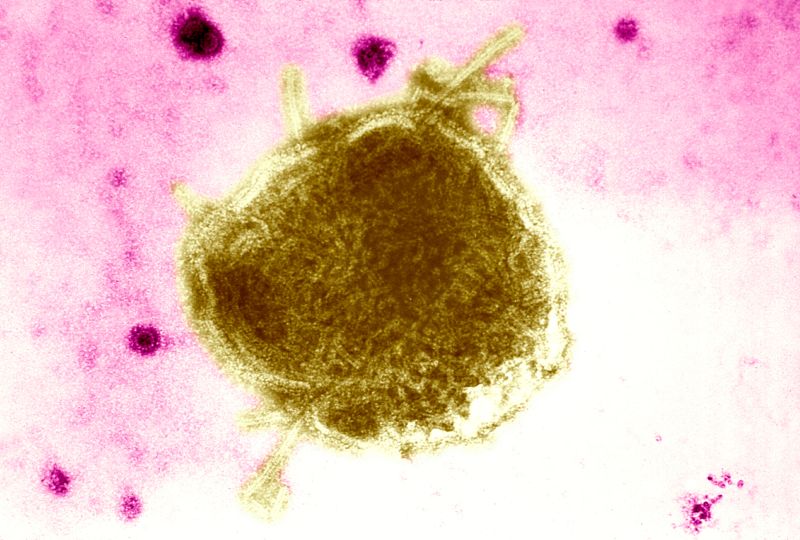
As a measles outbreak causes dozens of illnesses in West Texas, it’s important to know how to identify signs of the illness – especially in young children.
Measles, one of the world’s most contagious infectious diseases, can cause serious complications – such as blindness, pneumonia or encephalitis, swelling of the brain – and even turn deadly, especially in children younger than 5.
“About 1 in 5 unvaccinated people in the US with measles will be hospitalized, and as many as 1 in 20 children with measles will get pneumonia, which is the most common cause of death from measles in young children,” Dr. Melissa Stockwell, a professor of pediatrics at Columbia University’s Vagelos College of Physicians and Surgeons, said in an email.
Overall, she said, it’s estimated that up to 3 out of every 1,000 children who become infected with measles will die from respiratory and neurologic complications.
“If a family has concerns, I urge them to please reach out to their child’s health care provider so they can talk with them and get the facts about measles and measles vaccination,” Stockwell wrote.
The best protection against measles is vaccination against the virus. But a record share of US kindergartners had an exemption for required vaccinations last school year, leaving more than 125,000 new schoolchildren without coverage for at least one state-mandated vaccine, according to data published by the US Centers for Disease Control and Prevention in October.
The US Department of Health and Human Services has set a goal that at least 95% of children in kindergarten will have gotten two doses of the measles, mumps and rubella (MMR) vaccine, a threshold necessary to help prevent outbreaks of the highly contagious disease.
But the US has fallen short of that threshold for four years in a row.
Most of the cases in the current outbreak in West Texas are centered in Gaines County, where coverage of the MMR vaccine is particularly low: Nearly 1 in 5 incoming kindergartners in the 2023-24 school year did not get the vaccine.
Three measles warning signs
Early on, measles can cause symptoms that may appear similar to those of other respiratory illnesses, such as the flu or the common cold.
“With early measles, it’s very difficult to differentiate measles from other common respiratory illnesses. There are three signs that run together: cough; conjunctivitis, or red eyes; and coryza, which is a term for a very congested or stuffy nose,” said Dr. Glenn Fennelly, a pediatric infectious diseases specialist and assistant vice president for global health at Texas Tech Health El Paso.
“If you see all three of those together, that’s reason to be concerned,” he said.
Other key symptoms of measles include a high fever that may spike to more than 104 degrees Fahrenheit, a red blotchy measles rash and Koplik spots, which are tiny white spots that may appear inside the mouth two to three days after symptoms begin.
“While some of the symptoms of measles in its early phase can overlap with other respiratory viruses like runny nose, cough and fever, typical measles cases have a hallmark rash,” which usually begins three to five days after the other symptoms start, Stockwell said.
If someone develops any of those symptoms, it’s important to have a conversation with their physician or medical care team before taking them to the doctor’s office, urgent care center or hospital, Fennelly said.
“Measles is highly contagious. It’s best that the staff has a heads up,” he said, because the person should be “immediately isolated.”
Calling ahead allows the health care provider to make accommodations and provide guidance on how to safely see the patient while reducing the risk of measles spreading in a busy waiting room.
How does measles spread?
The measles virus spreads through coughing, sneezing and breathing the same air that was breathed by someone infected with measles. The virus can linger in the air or on surfaces for up to two hours – even after the infected person has left the room.
It’s estimated that one person infected by measles can infect 9 out of 10 of their close contacts, if those contacts are unvaccinated. Measles is so contagious partly because an infected person can spread the virus to others even before knowing they have it – from four days before through four days after the rash appears.
“The best protection is for all parents to get their children immunized at the time the immunization is recommended, and that’s starting at a year of age, with a second dose recommended around 4 to 6 years of age,” Fennelly said.
Can you get measles if you’re vaccinated?
The measles, mumps and rubella vaccine has been found to be safe and effective, Fennelly said. One dose is 93% effective against measles, and two doses are 97% effective.
Officials’ guidance says children should get two doses of the MMR vaccine: the first between 12 and 15 months and the second around age 4, before starting school. These two doses usually protect people against measles for life.
Because the vaccine is not 100% effective, the more measles spreads, the higher the risk that a vaccinated person may be infected if they’re exposed to the virus. However, disease symptoms are generally milder in vaccinated people, and they are also less likely to spread it to others.
CDC guidance also indicates that if someone is exposed to measles, getting the MMR vaccine within 72 hours could induce some protection or result in less serious illness.
Older children or adults can get vaccinated if they didn’t get the vaccine as a child. However, people born before 1957 are likely to have been naturally infected and thus already have immunity, according to the CDC.
If you got the first version of the measles vaccine – a killed-virus vaccine used between 1963 and 1968 – or don’t know which type of vaccine you received, the CDC recommends getting at least one dose of MMR.
Before the introduction of the measles vaccine in 1963, the virus would claim an estimated 2.6 million lives each year worldwide. In 2023, the World Health Organization estimated that there were 107,500 measles deaths, largely in countries with low vaccination.
In the United States, there have been recent declines in some parents getting their children vaccinated, driven largely by the spread of misinformation, including the misconception that vaccination may be tied to autism.
“Measles vaccines are safe and effective. There is no validated study showing any link with autism,” Fennelly said. “That measles vaccines are safe has been demonstrated by the millions of children that have received them without complications. What parents should fear, in the case of measles in particular, is not the vaccine but the illness, which can be devastating.”
How measles is treated
There is no specific antiviral therapy for measles, but some of the complications associated with the illness can be treated.
“There is unfortunately no treatment for measles,” Stockwell wrote in the email.
“Sometimes measles can result in a secondary infection such as an ear infection or pneumonia that needs antibiotic treatment,” she added. “Finally, vitamin A can be an important adjunctive therapy for measles that can help protect against severe disease and some of the adverse effects of measles.”
Fennelly noted that measles is a “strongly immunosuppressive” virus, meaning it weakens the infected person’s immune system, and bacterial infections like bacterial pneumonia are a major cause of measles-related death.
“Children may have bacterial infections in the respiratory tract that require antibiotic treatment,” Fennelly said.
Additionally, “any child that’s sick enough to get hospitalized will probably get high-dose vitamin A,” he said. “Vitamin A has been shown to have a very strong impact during acute measles, and for children that are very ill, it can lead to a 50% reduction in mortality.”
People whose doctors say they should stay home can be treated with fever-reducing medications, rest and lots of hydration.
“It’s important to isolate the child during the period where the child might be contagious and to stay in close contact with the pediatrician,” Fennelly said. “If a child begins behaving excessively sleepy or very irritable, those would be reasons to get back in touch with the pediatrician.”
